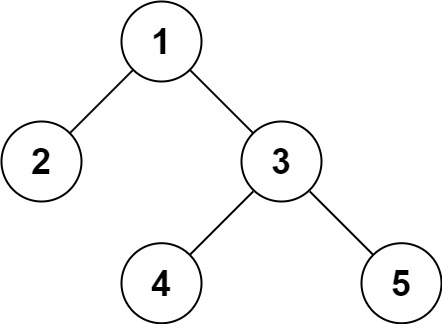Serialize and Deserialize Binary Tree (H)
题目
Serialization is the process of converting a data structure or object into a sequence of bits so that it can be stored in a file or memory buffer, or transmitted across a network connection link to be reconstructed later in the same or another computer environment.
Design an algorithm to serialize and deserialize a binary tree. There is no restriction on how your serialization/deserialization algorithm should work. You just need to ensure that a binary tree can be serialized to a string and this string can be deserialized to the original tree structure.
Clarification: The input/output format is the same as how LeetCode serializes a binary tree. You do not necessarily need to follow this format, so please be creative and come up with different approaches yourself.
Example 1:

Input: root = [1,2,3,null,null,4,5]
Output: [1,2,3,null,null,4,5]
Example 2:
Input: root = []
Output: []
Example 3:
Input: root = [1]
Output: [1]
Example 4:
Input: root = [1,2]
Output: [1,2]
Constraints:
- The number of nodes in the tree is in the range
[0, 104]. -1000 <= Node.val <= 1000
题意
实现二叉树的序列化和反序列化。
思路
按照前序遍历的顺序序列化二叉树,形式为结点的值用分隔符相连。反序列化同样参照前序遍历的顺序,递归处理即可。
代码实现
Java
public class Codec {
// Encodes a tree to a single string.
public String serialize(TreeNode root) {
if (root == null) {
return "null";
}
String s = "" + root.val;
s +="," + serialize(root.left);
s += "," + serialize(root.right);
return s;
}
// Decodes your encoded data to tree.
public TreeNode deserialize(String data) {
String[] arr = data.split(",");
Queue<TreeNode> q = new LinkedList<>();
for (int i = 0; i < arr.length; i++) {
q.offer(arr[i].equals("null") ? null : new TreeNode(Integer.parseInt(arr[i])));
}
return dfs(q);
}
private TreeNode dfs(Queue<TreeNode> q) {
if (q.isEmpty()) {
return null;
}
TreeNode cur = q.poll();
if (cur == null) return null;
cur.left = dfs(q);
cur.right = dfs(q);
return cur;
}
}